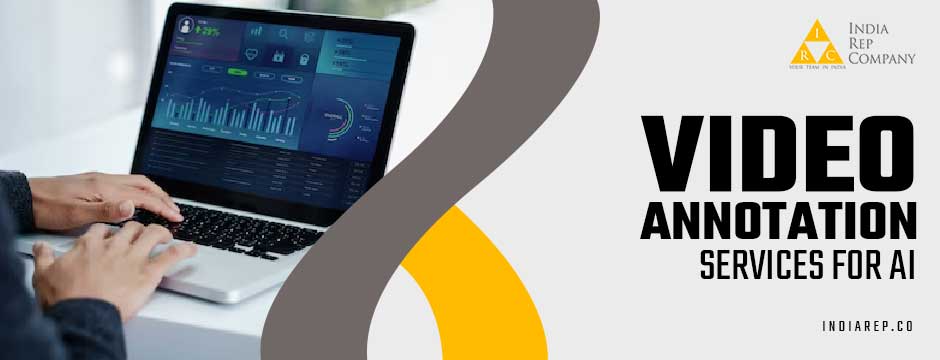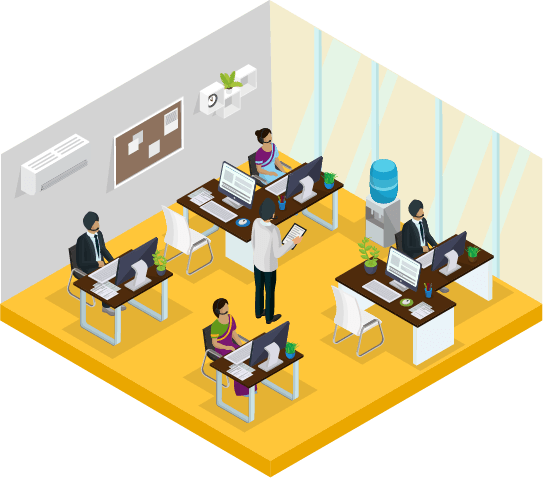Video annotation services play a crucial role in training AI models to understand and interpret visual data accurately. These services provide labeled and annotated video datasets that enable AI algorithms to recognize objects, activities, and scenes. However, video annotation services are not without challenges. In this blog post, we will discuss some of the common challenges faced in video annotation services for AI, such as scalability, data quality, annotation consistency, and privacy concerns. Additionally, we will discuss effective solutions and best practices to address these challenges and ensure accurate and reliable training data.

Scalability
One of the significant challenges in video annotation services for AI are scalability. As the volume of video datasets continues to grow exponentially, annotating large amounts of data becomes a time-consuming and resource-intensive task. Manual annotation processes struggle to keep up with the demand, leading to project delays and increased costs.
Solution:
Automation and semi-supervised learning techniques offer effective solutions to address scalability challenges in video annotation services for AI. Automation involves leveraging computer vision algorithms and machine learning to perform initial annotations or pre-annotations automatically. Automated annotation tools can analyze video frames, identify objects, and generate annotations, reducing the manual effort required by human annotators. This automation significantly accelerates the annotation process, making it more efficient and scalable. Human annotators can then focus on refining and validating the automated annotations, ensuring their accuracy.
Semi-supervised learning approaches utilize partially annotated data to train AI models. Instead of fully annotating every frame in a video, a subset of frames is annotated while the remaining frames are left unlabeled. The AI model is trained on the partially annotated data, learning to make predictions on the unlabeled frames. In video annotation services for AI, this approach optimizes the annotation process by reducing the amount of manual annotation required, thus improving efficiency and scalability.
Data Quality
Maintaining high-quality annotated data is crucial for the accuracy and reliability of AI models. However, video data presents challenges such as low resolution, occlusions, and complex scenes, which can result in potential inaccuracies in annotations. Inconsistencies in labeling and varying annotation styles can also impact data quality.
Solution:
Implementing robust quality control measures is essential to ensuring data quality. Regular checks and validations by experienced annotators, inter-annotator agreement assessments, and clear annotation guidelines can help maintain consistency and accuracy. An iterative feedback loop between annotators and project managers aids in resolving ambiguities and refining annotation instructions.
Annotation Consistency
Annotation consistency is critical to ensuring reliable AI model training. When multiple annotators are involved, variations in interpretation and labeling decisions can arise, leading to inconsistencies across the dataset. These inconsistencies can affect the model’s ability to generalize and make accurate predictions.
Solution:
Establishing a clear annotation guideline and providing comprehensive training to annotators can significantly improve annotation consistency. Regular meetings, discussions, and feedback sessions among annotators and project managers can help address any ambiguity or confusion. Inter-annotator agreement tests can be conducted to measure the level of agreement among annotators and identify areas requiring further clarification.
Privacy Concerns
Video data often contains sensitive information, such as personally identifiable details or private locations. Protecting privacy while annotating such data poses a significant challenge. Annotators need to handle data with the utmost confidentiality and ensure compliance with privacy regulations.
Solution:
Implementing stringent data privacy measures is crucial for video annotation services. Annotators should sign non-disclosure agreements (NDAs) to maintain data confidentiality. Masking or blurring sensitive information in videos can be applied during the annotation process. Encryption and secure data transmission protocols should be employed to protect data in transit and storage.

Expertise and Training
Video annotation services for AI necessitate expertise in comprehending intricate scenes, accurately identifying objects, and recognizing activities. The proficiency of annotators directly impacts the quality and accuracy of annotations. Therefore, ensuring that annotators possess the necessary domain knowledge and training is crucial for producing high-quality annotations.
Solution:
Building a skilled annotation team or partnering with experienced annotation service providers can address the challenges related to expertise and training. Hiring annotators with a background in computer vision or related fields can bring valuable domain knowledge to the annotation process. These individuals possess a more profound understanding of visual concepts, object recognition, and activity detection, enabling them to annotate videos with greater accuracy and precision.
Continuous training and feedback are essential for improving annotation accuracy and efficiency. Annotators should receive ongoing training sessions to enhance their skills and stay updated with the latest annotation techniques and tools. Regular feedback sessions help address any performance gaps, clarify annotation guidelines, and ensure consistency across the team.
Tooling and Infrastructure
Choosing the right annotation tools and establishing a robust infrastructure are critical components for successful video annotation services. However, this task can be challenging due to various factors. The tools selected for video annotation must possess specific qualities to ensure efficient and accurate annotation processes.
Efficiency is a crucial factor, as video datasets tend to be large and time-consuming to manually annotate. The annotation tools should have features that expedite the annotation process, such as keyboard shortcuts, predefined labels, and efficient frame navigation. These features can help annotators work more efficiently and increase productivity.
User-friendliness is another essential aspect. The tools should have an intuitive interface that is easy to navigate and understand, even for annotators with limited technical expertise. User-friendly annotation tools minimize the learning curve and enable annotators to focus on the task at hand, ensuring high-quality annotations.
Summary
Video annotation services for AI are important in training AI models to interpret visual data accurately. However, they face several challenges, including scalability, data quality, annotation consistency, privacy concerns, expertise and training, and tooling and infrastructure. These challenges can be overcome by implementing effective solutions and best practices, such as automation and quality control measures. Furthermore, it is necessary to have clear annotation guidelines, data privacy measures, continuous training, and the right annotation tools and infrastructure. Overcoming these challenges will ensure the availability of high-quality annotated video datasets, facilitating the development of robust and accurate AI models. For this purpose, if you need help from experts, choose the India Rep Company.



